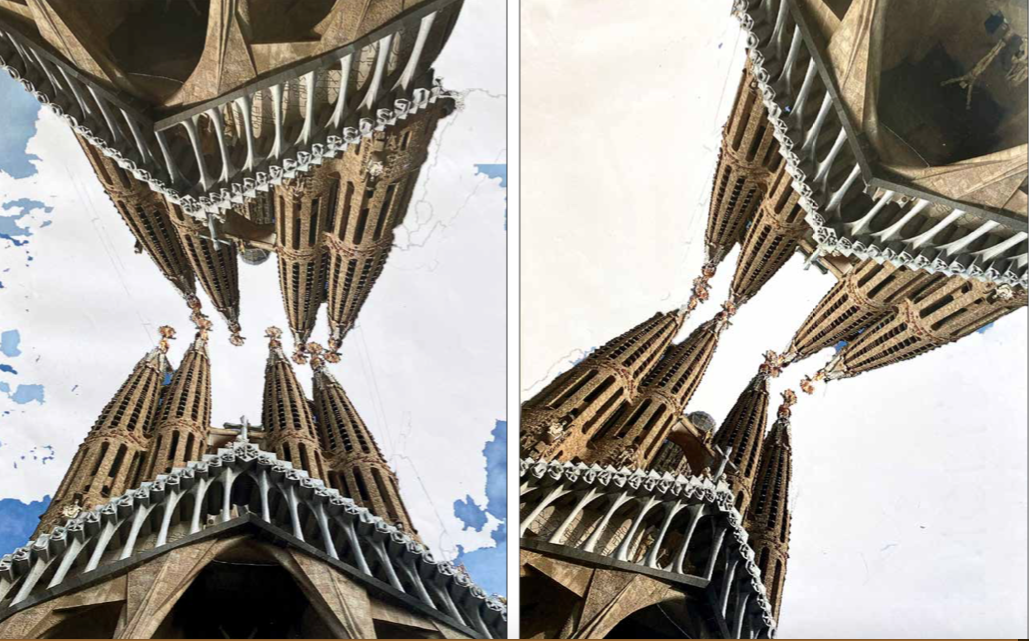
Are you hoping to study Art at GCSE or A Level? Have you ever considered becoming an artist? How about working in product design or becoming an architect? Or even a career in fashion? If so, a portfolio to demonstrate your work is key. Portfolios show your time management and critical thinking skills, as well as your unique artistic talents. They also serve as a point of reference and reflection.
As defined by University of the Arts London (UAL), a portfolio is ‘a collection of work that showcases your skills, personality and creative potential. It should narrate your story – from what you’ve learnt and created so far to what you plan to do next.’
An art portfolio is essentially a showcase of what you can do. It should show how your skills have developed over time. Art and design schools and universities require a portfolio as part of the application process, generally accompanied by a personal statement.
Although it is tricky to offer a list of criteria that will match all circumstances, here are nine things to bear in mind when creating an art portfolio:
1. Do your research
Art schools have different requirements for their portfolios, so check the criteria specific to the institution to which you are applying. Some schools are more flexible, while others will have much stricter requirements. Read the criteria closely to ensure your portfolio meets each point.
Make a note of the demands of courses you’re interested in. It is wise to apply for a number of different schools and even courses.
2. Leave yourself enough time
Portfolios take a long time to prepare. Creating a portfolio from scratch may take around 6 months. Bear this in mind and organise yourself. Work on it regularly, in small chunks so as not to overwhelm yourself. Crucially, make a note of the due date for the application and portfolio.
Leave plenty of time to select and review your work, or even to redo projects which didn’t quite work. Don’t leave editing until the last minute or you might run out of time for this crucial stage. Don’t limit yourself to the number of pieces required for the portfolio – it is advisable to over-create, so you can edit your final work and remove the weakest pieces. However, you should be realistic about how much you can get done in the available time frame. Remember, quality over quantity, include a range of subject matter, mediums and techniques, and avoid repetition. You want to submit work that you’re proud of!
If applying from abroad, find out if there are special requirements for international applicants, for example if you can submit your portfolio by email in place of delivering it in person. Investigate whether courses accept work in development, or only finished pieces. Including unfinished work can help show admissions staff how you have researched and developed your ideas. Find out too how the work should be presented and whether submissions must be digital, hardcopy reproductions or original work.
3. Get inspired
Take inspiration from the work of others. Deep dive into an artist who has influenced you.
For instance, Nadezda explores the work of Francis Bacon, and how it links to her theme of the unconscious mind.
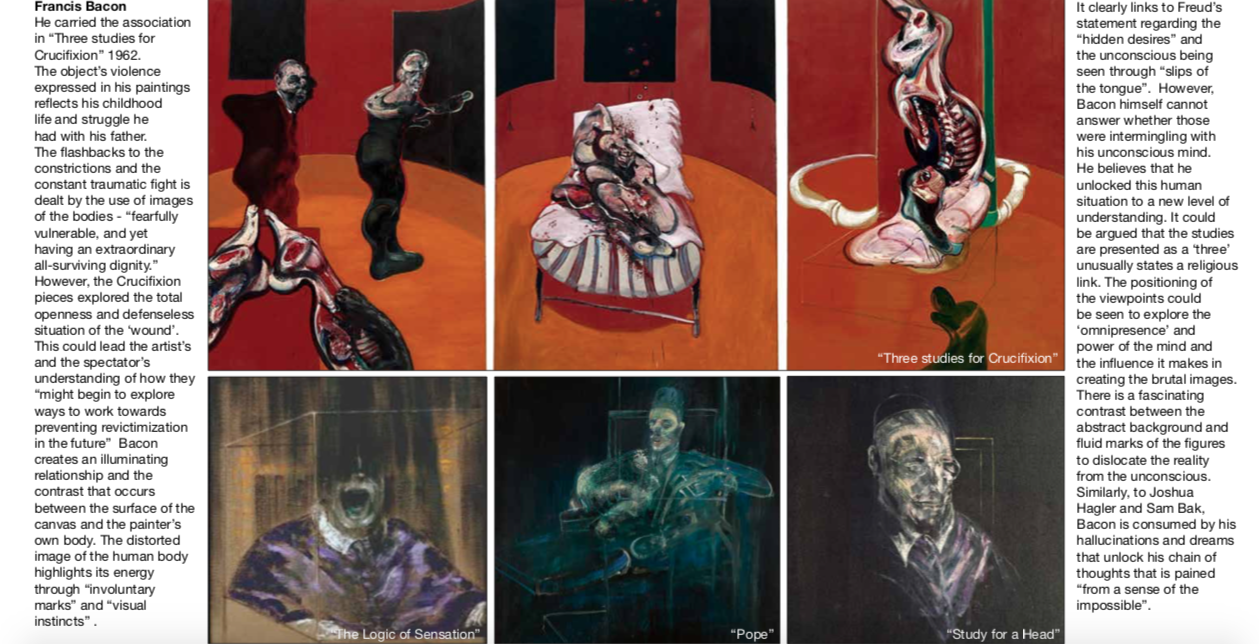
Nadezda draws inspiration from Gaudi for the piece below.
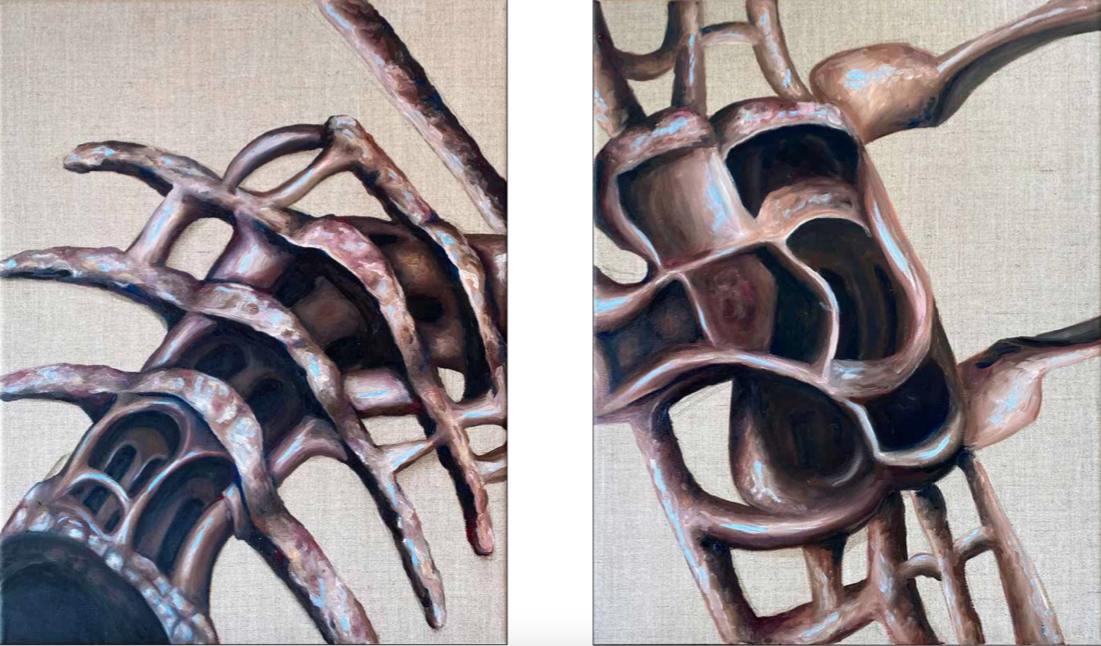
Look at the portfolios of former students. If you understand what is expected of you, you can begin to think about how you will showcase your strengths. But make sure you never copy another’s work!
4. Plan your portfolio
Planning your portfolio is key. You should include a range of recent visual work (completed within the last year or two) that most effectively shows your artistic skills and experience, your creative ideas and your passion and commitment.
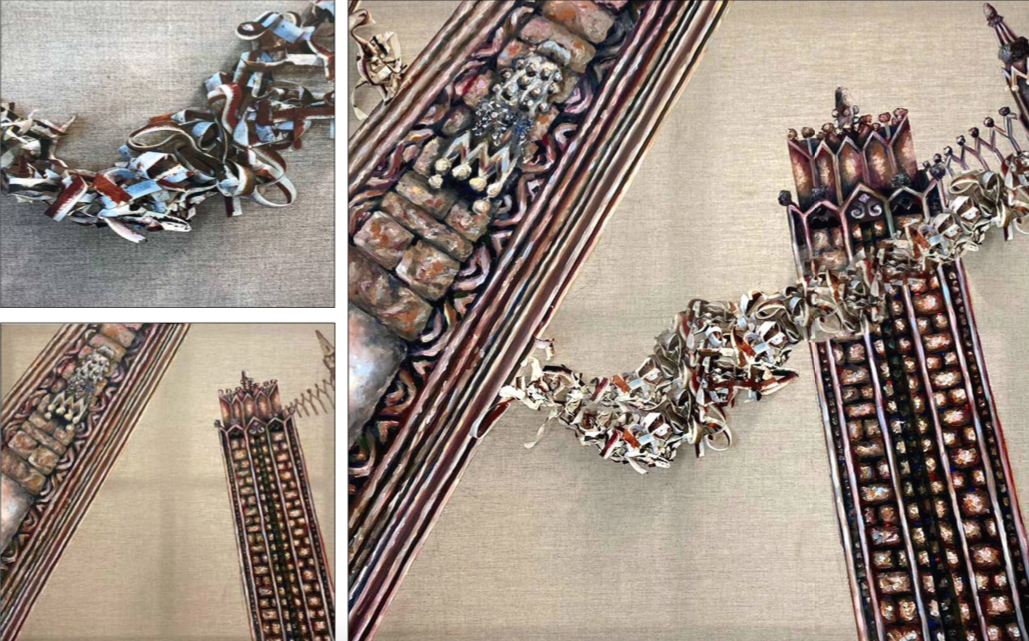
Above, Nadezda creates an original piece to challenge the viewer’s senses, while demonstrating her artistic ability.
5. Adapt your portfolio to suit the degree you are applying to
You can alter your portfolio slightly to showcase strengths relevant to the course you’re interested in, rather than having to completely re-do it for each different course you apply for.
For example, in the case of architectural degrees, observational drawings of building interiors may be suitable, but don’t make your portfolio solely based on this. Remember that the admissions team for an architectural course still want to see a range of media and strong observational drawing skills, which can be shown through unrelated subject matter. 3-D sculptures can be a great inclusion to show your spatial awareness.
One of the courses Nadezda applied for was BSc Urban Planning, Design and Management at UCL. Relevant to this course, the page from her portfolio below demonstrates her interest in architecture and the construction of buildings in Venice.
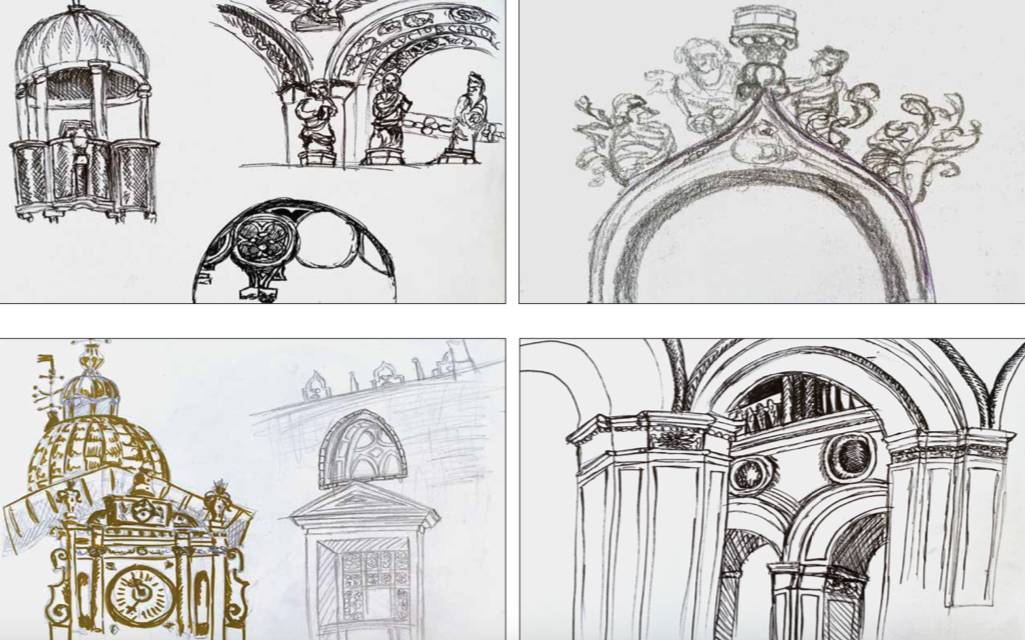
For digital-based degrees, evidence of technological understanding and the ability to work with digital platforms, while film school portfolios may include screenshots and short video extracts from original films, animations and videos, storyboards and costume or set design. Meanwhile, fashion design portfolios will consist of figure drawings and records of original textiles or fashion projects. For art and design courses, you may wish to include examples of your drawings, sketches, paintings and ceramics.
For Art, Architecture and Fashion Design courses, you will need to convey your skills in observational drawing. An observational drawing is ‘a realistic representation of an object or scene that has been viewed directly in real life’ (Student Art Guide). Something students often fail to realise is that creating original work from direct observation is key, and should form the basis of your portfolio. Drawing from direct observation will already put you yards ahead of other students.
It is important, though, to show a wide range of work, highlighting the different techniques you have mastered, and the variety of materials you have made use of.
6. Don’t be afraid to experiment
Admissions staff want to see your artistic journey, and to know that you aren’t afraid to experiment with new styles and techniques. Challenge yourself – after all, the best artists never pushed the boundaries by staying in their comfort zone!
Nadezda experiments with different layers and textures, as well as photoshop. She justifies her choice, linking it to the themes in her portfolio around the unconscious mind.
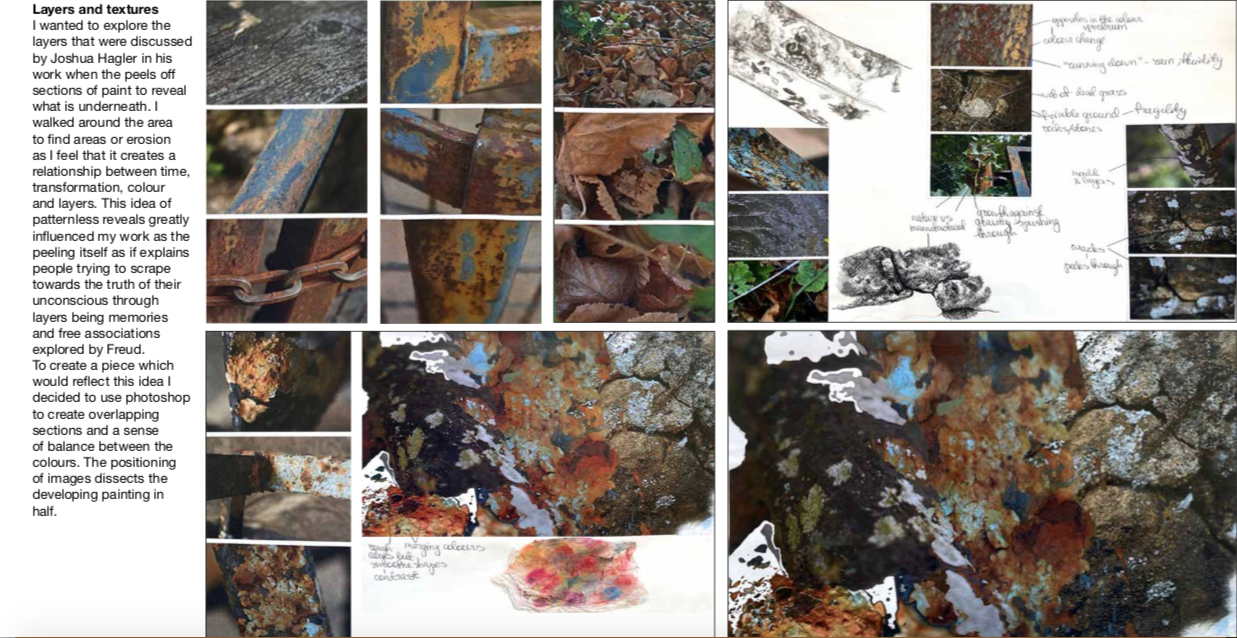
She uses different media – tissue paper and spray paint in this case – to explore the fluidity of biomorphic forms, drawing inspiration about the intentions of the mind from Brice Marden. Note her use of annotations and labels.
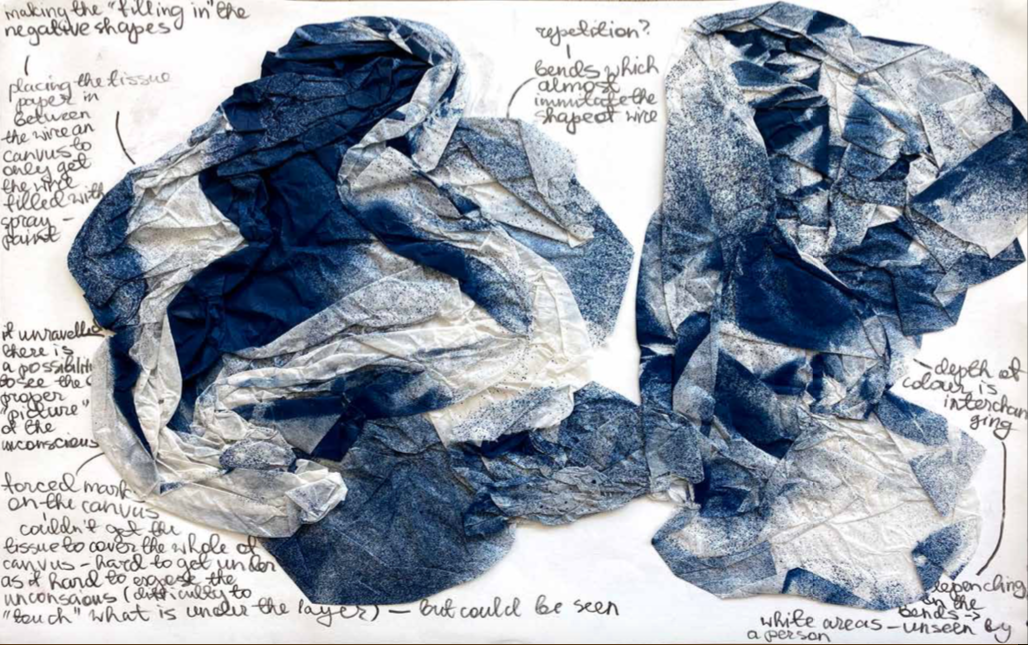
The most effective portfolios convey the personality, individuality and passion of the creator. Having said this, use the portfolio journey as a chance to find your unique and personal style, and include artwork that highlights your strengths. Showcase your technical ability, so admissions teams see there is a foundation they can work with. Don’t include poor quality work just so you appear multidisciplinary.
7. Provide a written commentary about your work
Explaining your work is a crucial part of the portfolio. Include labels to demonstrate your creative vision throughout the process.
In the text on the left of this page of Nadezda’s portfolio, she explains her thought process behind trying different techniques and mediums:
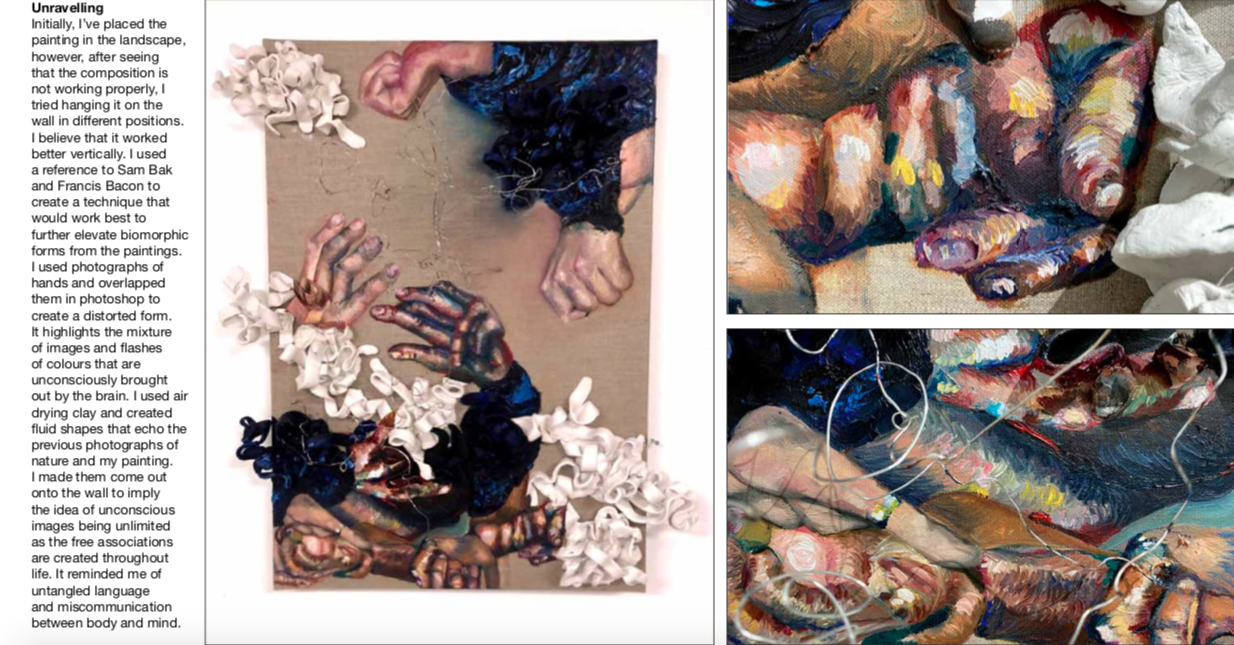
You should provide a strong narrative throughout the portfolio to explain the journey you were on when you created each piece. Consider the following questions:
- What problems have you had to overcome when creating your work?
- How have these problems helped you advance your work?
- What was your inspiration for each piece?
- Where do you see your work advancing?
8. Consider the presentation of your work carefully
The presentation of your portfolio is crucial. How you organise and arrange your portfolio will influence the way in which your work is seen. Admissions staff may only look at your work for five minutes, so first impressions are critical.
Here, Nadezda places warm tones against colder, contrasting each shape and structure of shadow with colour in order to highlight the importance of shape.
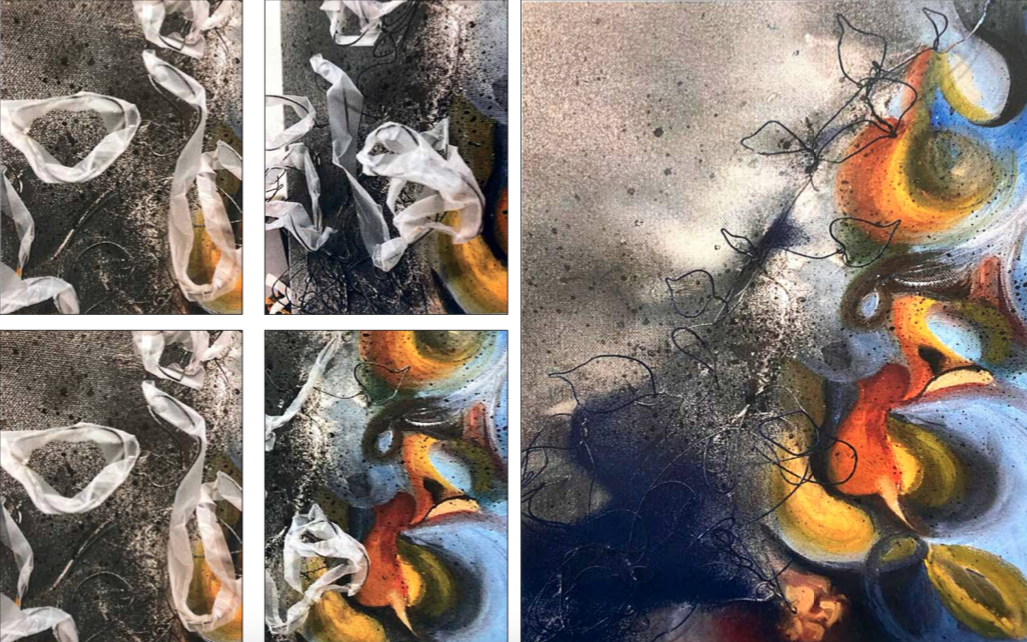
Make sure you edit your work. But be careful to neither over-edit your work nor to leave every single piece of work you’ve ever done in your portfolio; include the pieces you’re most proud of. As UAL states, ‘if you can’t explain a particular piece, don’t include it’. Be decisive about what you include, to demonstrate your ability to be concise, a crucial life skill.
Organise the portfolio such that it is easily navigable and be prepared to talk about any piece at interview; universities will want to understand your thought process. Order your work logically – draw connections between pieces, bearing in mind that narrative is an important part of the portfolio. You might want to arrange your artwork by themes and motifs.
Below, Nadezda explores the theme of the unconscious mind around which her portfolio is based:
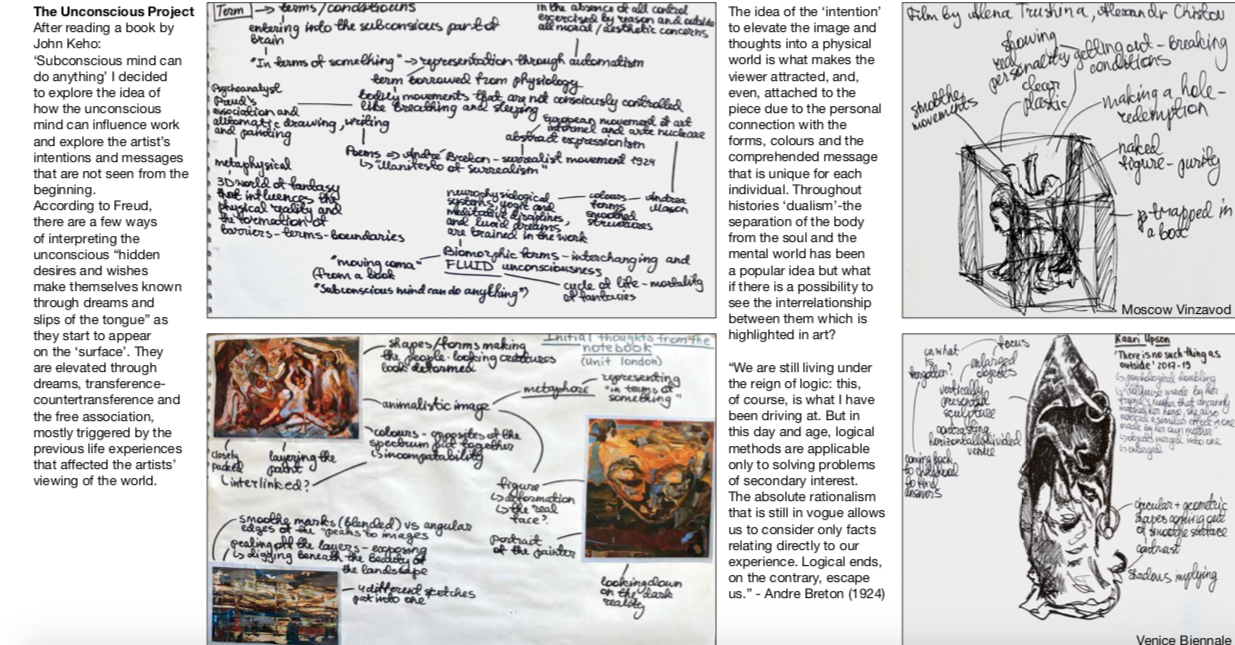
If no size is specified for the portfolio, A3, A2 or A1 is usually appropriate. Neutral, plain portfolio colours are advisable, so the eye remains on your artwork. Check labelling guidelines, but generally label work in small, clear writing so as not to detract from the art itself. Avoid unnecessarily repeating pieces of work.
9. Be critical of your work
Write down your feelings about your work as you go, both positive and negative. Look at your work objectively. This might mean asking someone to look over your work and assist you with the final selection. Ideally, this would be someone with a background in the field of art or design, although it is advisable to get feedback from more than one mentor, as everyone has different ideas about what good art is. At Bruton Lloyd, we have tutors that are highly experienced in assisting students with portfolio preparation.
Here is a summary of our top tips on putting together a good portfolio:
- Explore a variety of themes and subject matter
- Quality over quantity
- Try to avoid cliches, fan art or too much repetition of the same thing
- Choose things that have meaning to you
- Do not copy from another artist
- Link your portfolio to what you plan to study
- Experiment – show you have a range and breadth of skills, and are willing to try new things
- Think carefully about how you organise and display your artwork
- Include unfinished work if accepted, to show how your ideas have developed
- Label and annotate your work, clearly, concisely and neatly
- Come up with creative, original ideas
- Show your personality, strengths, interests and experiences through your artwork – ‘make art about something’ (Student Art Guide)
- Demonstrate your passion, commitment and enthusiasm by including independent and self-initiated work that you have undertaken outside school
- Ask for advice from an experienced art teacher or tutor – at Bruton Lloyd, we have some wonderful art tutors who can help you assemble your portfolio
Don’t hesitate to get in touch for guidance on your art portfolio. Keep an eye out for the next post in this series: Art Foundation courses.